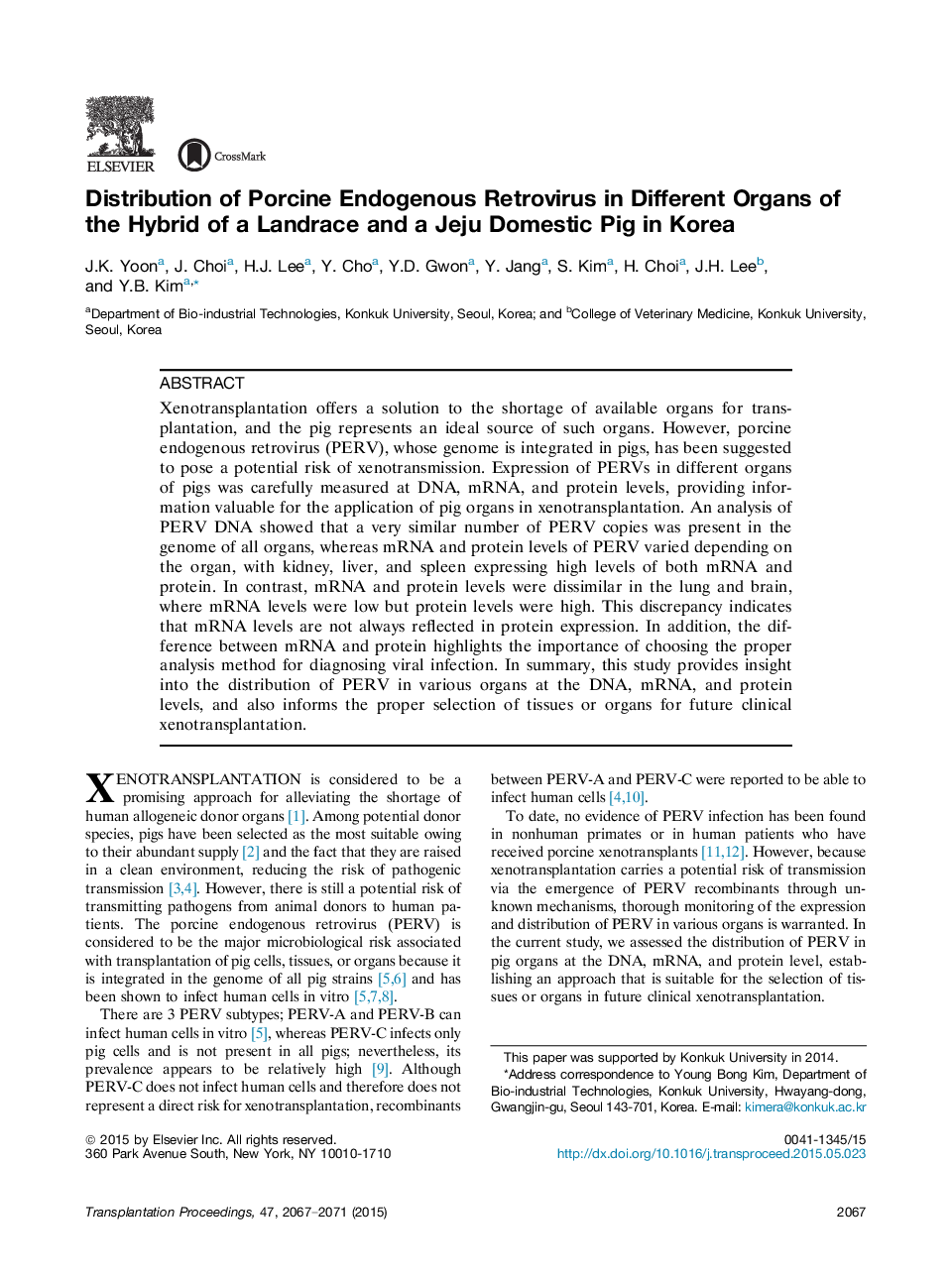| Article ID | Journal | Published Year | Pages | File Type |
|---|---|---|---|---|
| 6247310 | Transplantation Proceedings | 2015 | 5 Pages |
â¢PERV DNA was distributed equally throughout the tested organs.â¢PERV protein expression is variably correlated with PERV mRNA expression.â¢PERV is detected not only in the general circulatory organs but also in the brain.â¢We should consider the potential of PERV to act as a zoonosis agent in human brain.
Xenotransplantation offers a solution to the shortage of available organs for transplantation, and the pig represents an ideal source of such organs. However, porcine endogenous retrovirus (PERV), whose genome is integrated in pigs, has been suggested to pose a potential risk of xenotransmission. Expression of PERVs in different organs of pigs was carefully measured at DNA, mRNA, and protein levels, providing information valuable for the application of pig organs in xenotransplantation. An analysis of PERV DNA showed that a very similar number of PERV copies was present in the genome of all organs, whereas mRNA and protein levels of PERV varied depending on the organ, with kidney, liver, and spleen expressing high levels of both mRNA and protein. In contrast, mRNA and protein levels were dissimilar in the lung and brain, where mRNA levels were low but protein levels were high. This discrepancy indicates that mRNA levels are not always reflected in protein expression. In addition, the difference between mRNA and protein highlights the importance of choosing the proper analysis method for diagnosing viral infection. In summary, this study provides insight into the distribution of PERV in various organs at the DNA, mRNA, and protein levels, and also informs the proper selection of tissues or organs for future clinical xenotransplantation.
